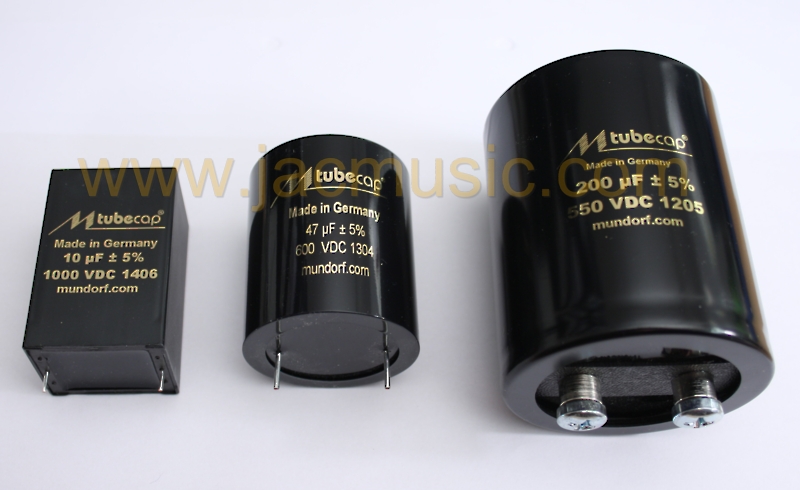Mundorf TubeCaps

Note, the 200uCap on the right is 550V, not 50V, the picture makes the first digit fade.
This is a most interesting product. These capacitors are foil capacitors, but they have the size of electrolytics. So really the advantages of two worlds. For me, this is something new.
Mind you, electrolytics are low cost, small size, but after +15...30 years, they become the #1 failure source in almost every equipment. So yes you can take foil caps, but these are 10x larger and 10x more expensive for the same electrical value. 200uF 550V with a regular foil cap would be 2x larger as the whole mains transformer. So for higher values, often the electrolytic wins. Also the Mundorf electrolytics.
But this may change now....
Here comes the nice thing with these TubeCaps! They are a factor 1.3 larger only, and a factor 3 more expensive "only". So they become affordable! These are no normal foil caps. They are dry caps, foil caps, and no chemical process inside, but they do have a small leakage. It is really not much, and NO PROBLEM for a power supply to have 0.5 uA leakage, but this makes them not suited for tube coupling or signal applications. So they are only used for High Voltage power supply.
Rectifier Ripple current of those is allowed to be higher as with Electrolytics. Unlike electrolytics, TubCaps do not suffer from ripple current. Internal resistance is much lower and will stay that low for ever. This is a breakthrough product for me!
Just for your interest, I successfully used them to re-magnetise old magnets. The internal impedance of the TubeCaps with screw connections is unusually low. I wound appr 100 windings 0.5,mm copper wire around the magnet, and connected this with a 100uF tube cap charged at 500V. I put a diode in anti parallel with the coil, which diode was blasted away violently. Only the standing wires were left. So this diode is sacrificed. But is was just this very large fly back pulse I wanted, and this pulse re-magnetized the old magnet. Reason is, I cannot switch such high current by hand. But the anti parallel diode if shorted will be like a switch of very high current too. It switches "on" when it shorts, and "off" when it is blasted away. I don't want to discuss the method, but sure is, it worked. I needed to try a few times. Each time, you get another magnetism value. Until there was one which was a 25% improvement of the magnet. Just wjat I needed. It needed a few diodes of course. Then I tried with a normal electrolytic cap. That shorted the diode too, but not blast it away. It damaged the electrolytic cap after a few times, and also the pulse was far too small to improve the magnet. Every time the magnetism was low. Please don't repeat this. Better use them for power supply only :)